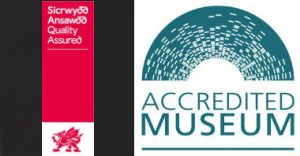Copper brought wealth to the district, but at a substantial cost. The copper ores are notoriously impure. The separation of the metal from the copper ore, produced mountains of slag and furnace ash, and billowing clouds of foul-smelling smoke that was laced with sulphur and arsenic.Social status in Swansea became a matter of distance from the furnaces and the chimneys. For the workers, unfortunately, their rows of houses were clustered near and around the copper works. Copper workers were known for their sallow complexion, they looked unnaturally thin, and many suffered from consumption (Tuberculosis).
The historian W.R. Lambert wrote at the time “that when men from outside the district were hired by the copper works, they either became used to the conditions or died within a very few months.” A copper worker noticed when he first started, that he “suffered much from my stomach….I spat blood for some time, but I became used to it.” Women and children as well as men were employed on the hardest and dirtiest tasks.
For most of the nineteenth no satisfactory technological solution to the pollution was found. Some improvements were made by the Vivian family with limited success, mainly because of the cost and difficulty in altering smelting methods.
At the time the opinion was also generally negative towards action that might stifle the industry from owners and workers alike.
Eventually the problem was eliminated only by the decline and extinction of the Swansea copper smelting industry itself.

